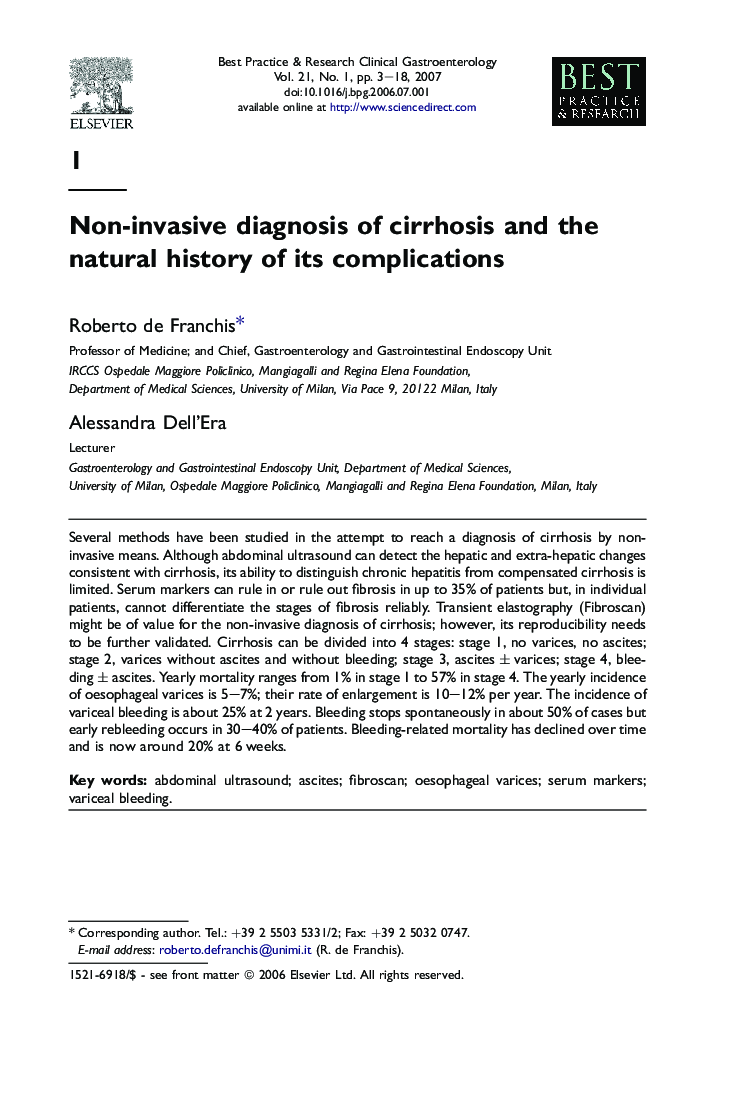| Article ID | Journal | Published Year | Pages | File Type |
|---|---|---|---|---|
| 3254740 | Best Practice & Research Clinical Gastroenterology | 2007 | 16 Pages |
Several methods have been studied in the attempt to reach a diagnosis of cirrhosis by non-invasive means. Although abdominal ultrasound can detect the hepatic and extra-hepatic changes consistent with cirrhosis, its ability to distinguish chronic hepatitis from compensated cirrhosis is limited. Serum markers can rule in or rule out fibrosis in up to 35% of patients but, in individual patients, cannot differentiate the stages of fibrosis reliably. Transient elastography (Fibroscan) might be of value for the non-invasive diagnosis of cirrhosis; however, its reproducibility needs to be further validated. Cirrhosis can be divided into 4 stages: stage 1, no varices, no ascites; stage 2, varices without ascites and without bleeding; stage 3, ascites ± varices; stage 4, bleeding ± ascites. Yearly mortality ranges from 1% in stage 1 to 57% in stage 4. The yearly incidence of oesophageal varices is 5–7%; their rate of enlargement is 10–12% per year. The incidence of variceal bleeding is about 25% at 2 years. Bleeding stops spontaneously in about 50% of cases but early rebleeding occurs in 30–40% of patients. Bleeding-related mortality has declined over time and is now around 20% at 6 weeks.
